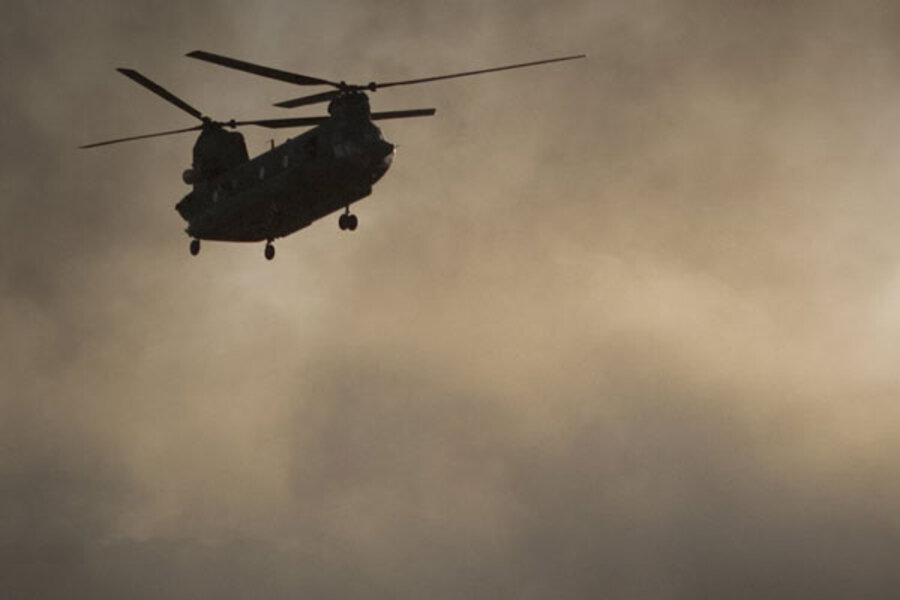Helicopter crash kills dozens in Afghanistan: implications for US war effort?
Loading...
| Kabul, Afghanistan; and New Delhi
A helicopter crash in eastern Afghanistan claimed the lives of at least 31 American Special Forces soldiers and 7 Afghan soldiers on Saturday. The loss is the biggest single day death toll for the United States in nearly 10 years of war in Afghanistan.
The Taliban claimed responsibility for downing the Chinook helicopter in Wardak Province (see map), less than 100 miles west of Kabul. Officials for the International Security Assistance Force, however, say they are still “assessing the circumstances” of the crash. They also acknowledged that there was “enemy activity in the area.”
If the helicopter was shot down, it could have significant implications for the war effort. Insurgents have hit helicopters in the past, but never in any great numbers. If today’s crash is an isolated incident, it is unlikely to significantly affect the direction of the war or American public perception, despite the magnitude of casualties that included so many highly trained commandos. But if it marks the beginning of a trend in which insurgents use advanced anti-aircraft weapons, it could cost NATO crucial air superiority.
Helicopter crashes have traditionally generated the largest single casualty incidents during the wars in both Iraq and Afghanistan. Chinook helicopters can carry large numbers of passengers and have contributed to the two previous most deadly days in Afghanistan for US forces on June 28, 2005 and April 6, 2005.
How was it shot down?
If insurgents are behind the crash, how they managed to shoot down the helicopter will likely prove a point of serious concern.
Large-caliber machine guns capable of serving as anti-aircraft weapons are widely available in Afghanistan. But so far insurgents have used these to little effect against helicopters. If militants managed to target the helicopter using a surface-to-air missile, however, it will spark major concerns.
“This technology and how the Taliban have accessed it raise the question from where and from what sources were they able to get such technology,” says Waliullah Rahmani, executive director of the Kabul Center for Strategic Studies. “If the Taliban is able to get regular access to these technologies, it will certainly have a significant, unfortunately dangerous effects for the future of the war in Afghanistan.”
During the Soviet Union's war here, the United States supplied Afghan fighters with shoulder-launched anti-aircraft missiles that definitively turned the conflict against the Soviets.
Over the course of the past 10 years, insurgents have had little if any access to such weapons, giving NATO forces much needed air superiority. Given regional tensions, particularly with Pakistan, concerns are likely to be magnified if Afghanistan's neighbors are found to be supplying such weapons to the Taliban and other insurgent groups.
Impact on public opinion
Today’s crash comes as public opinion has turned increasingly against US involvement in the war. A Quinnipiac University poll last month found that 55 percent of Americans think the US should not be involved in Afghanistan, with only 39 percent saying the US is doing the right thing by fighting the war.
That’s not necessarily because of pessimism about the direction of the war. Recent polls indicate that more than half of Americans think the war is going at least fairly or somewhat well. But the country’s rising debt and fiscal uncertainty have raised doubts about the cost of the war – and defense spending in general.
While the large number of American dead in this crash is likely revive calls to speed the withdrawal of US forces, it’s not likely to become a major turning point in public opinion.
In Iraq, a helicopter crash in 2005 also killed 31 US troops. Historical polling data collated on pollingreport.com suggest that support for the war declined no more than a percentage point in the immediate aftermath of that incident.





